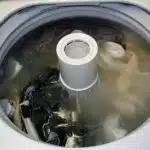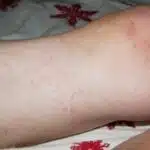As a laundry care expert, I believe that hand washing clothes is an essential skill for anyone who wants to take good care of their garments. Although washing machines are convenient, they can be harsh on delicate fabrics and may not always remove tough stains. Hand washing allows you to have more control over the cleaning process, which can prolong the life of your clothes and keep them looking new.
In this article, I will share with you my five-step method for hand washing clothes. These steps are easy to follow and require only a few basic tools. Whether you are traveling and need to wash some items in your hotel room or want to give special attention to a delicate garment at home, these tips will help you achieve great results. By learning how to hand wash clothes, you’ll not only save money on dry cleaning bills but also gain a sense of satisfaction from taking care of your belongings.
Gather Your Supplies
Did you know that hand washing clothes is still a common practice in many parts of the world? In fact, according to a recent survey, 1 in 3 people globally still wash their clothes by hand. Whether it’s due to cultural traditions or lack of access to washing machines, hand washing clothes can be an effective way to clean your garments if done correctly.
To get started with hand washing, it’s important to gather all the necessary supplies. Using the appropriate detergent is key as certain types of soap can damage or discolor fabrics. Look for a gentle detergent made specifically for hand washing clothes. Next, choose the right sink or basin for the job. It should be large enough to hold your clothing items and allow enough room for them to move around freely.
Once you’ve gathered your supplies, fill up your sink or basin with cool water and add a capful of detergent. Make sure to mix the detergent into the water thoroughly before adding your clothes. In the next section, we’ll discuss how to properly sort your laundry before beginning the wash process.
Sort Your Laundry
Sorting Techniques and Strategies
Proper sorting techniques are essential for achieving the best results when hand washing your clothes. Sorting your laundry helps to prevent color bleeding, fabric damage, and reduces the likelihood of washing machine malfunctions. Before sorting your clothes, it is recommended that you read their care labels to understand the specific washing instructions for each item. In general, separate clothes by color, fabric type, and level of dirtiness.
Color separation is crucial when sorting laundry. Separating lights from darks will reduce the risk of colors bleeding into one another during the wash cycle. Additionally, it is important to sort items that have bold or bright colors separately from pastels and neutrals. By doing so, you can avoid discoloration and keep your clothes looking vibrant for longer.
Sorting clothes by fabric type also helps prevent damage during the wash cycle. For instance, delicate fabrics like silk or lace require a gentle hand wash with mild detergent and lukewarm water. On the other hand, cotton fabrics can withstand hotter temperatures and more vigorous scrubbing without losing their shape or color. Lastly, sorting based on how dirty or soiled an item is will help ensure that heavily soiled items are washed separately from cleaner ones.
Transition: Once you’ve sorted your laundry by color, fabric type, and level of dirtiness using these techniques and strategies, it’s time to pre-treat any stains before proceeding to the next step in hand washing your clothes.
Pre-Treat Stains
As you begin to sort your laundry, it is important to keep in mind the various types of fabrics and colors that need to be washed separately. This will ensure that your clothes are not damaged or discolored during the washing process. Once this step has been completed, it’s time to move on to pre-treating any stains before hand washing.
Pre-treating stains is an essential step in hand washing clothes. It helps to remove any stubborn dirt or grime that may have set into the fabric over time. To effectively pre-treat stains, you should first identify the type of stain and then choose an appropriate pre-treatment solution. For example, a protein-based stain like blood or sweat requires a different treatment than an oil-based stain like grease or makeup.
Common mistakes to avoid when pre-treating stains include using too much solution, scrubbing too aggressively, and not allowing enough time for the solution to work its magic. Remember that patience is key when dealing with stubborn stains – allow the solution to sit on the affected area for at least 10-15 minutes before rinsing with cold water. By following these tips, you can ensure that your clothes come out looking clean and fresh every time.
- Choose an appropriate pre-treatment solution based on the type of stain
- Apply only a small amount of solution onto the affected area
- Gently rub the solution into the fabric using a soft-bristled brush
- Allow sufficient time for the solution to work (at least 10-15 minutes)
- Rinse thoroughly with cold water
Now that you know how to effectively pre-treat stains, it’s time to move on to filling up your sink or basin with lukewarm water and detergent. This will help ensure that your clothes are properly cleaned and ready for use once they have been hand washed.
Fill Your Sink Or Basin
After sorting your clothes, the next step in hand washing is filling up your sink or basin with water. It is important to use the right amount of water to allow for ample movement of the clothes during washing. Using too much water can cause wastage and make it difficult to rinse the clothes after washing.
One benefit of soaking clothes before washing is that it helps to loosen up dirt and stains, making them easier to remove during washing. Additionally, soaking helps to lift out any odors that may be clinging onto the fabric. To achieve this, add a laundry detergent that works well in removing stains and odors into the water before adding your clothes.
When choosing a laundry detergent for hand washing, look for one that is gentle on fabrics yet effective in stain removal. Some of the best laundry detergents for hand washing include Woolite Delicates Care Liquid Laundry Detergent, The Laundress Delicate Wash, and Eucalan Fine Fabric Wash. These detergents are formulated with gentle ingredients that leave your clothes clean without causing damage or fading colors.
As you fill up your sink or basin with water and add detergent, ensure that you mix it well to create suds. This will help distribute the detergent evenly throughout the water and prevent clumping of clothes during washing. With everything ready, it’s time to move on to the next step – adding your clothes into the soapy mixture for washing.
Add Detergent
- When it comes to selecting a detergent for hand washing clothes, it is important to choose one that is formulated for hand washing and will not damage the fabric.
- The amount of detergent used for hand washing is dependent on the size of the load and the type of fabric.
- To ensure proper cleaning, it is important to measure the detergent correctly.
- Once the proper amount of detergent has been determined, it should be added to the water before the clothes.
- If the detergent is a powder, it should be dissolved in a small amount of water before adding to the main load.
- If using a liquid detergent, it should be added directly to the main load of water.
Choose Detergent
When it comes to hand washing clothes, choosing the right detergent is crucial. Not all detergents are created equal, and selecting the wrong one can lead to unsatisfactory results. As a laundry care expert, I highly recommend using a gentle detergent that is specifically designed for hand washing. These types of detergents are formulated to effectively clean your garments while being gentle on delicate fabrics.
Opting for an eco-friendly detergent also has its benefits. Eco-friendly alternatives are made with natural ingredients that are biodegradable and non-toxic, making them safer for both you and the environment. They also tend to be gentler on fabrics, which can help prolong the life of your clothes. Moreover, using an eco-friendly detergent can help reduce your carbon footprint and contribute towards a more sustainable future.
In summary, choosing the right detergent is essential when hand washing clothes. A gentle detergent designed for hand washing will ensure that your garments come out clean without causing any damage or wear and tear. Additionally, opting for an eco-friendly alternative not only benefits you and your clothes but also contributes towards a healthier planet.
Measure Detergent
Using the Right Amount of Detergent: Tips and Tricks is essential when hand washing clothes. It’s not only about choosing a good detergent for your delicate fabrics, but it’s also about using the right amount to avoid damaging or deteriorating your garments’ quality. As a laundry care expert, I highly recommend measuring the amount of detergent you use according to the instructions on your product label. Too much detergent can cause excess suds that will be difficult to rinse out, leading to residual soap buildup that can damage or discolor your clothes.
When it comes to How to Choose the Best Detergent for Hand Washing Clothes, it’s important to note that different brands and types of detergents require different amounts for optimal performance. Some detergents may be more concentrated than others, so it’s crucial to measure your detergent precisely based on the instructions provided. Using too little detergent may not remove all dirt and stains from your clothes, while using too much can harm delicate fibers and leave soap residue.
To measure detergent accurately, you can use a measuring cup or spoon. If you don’t have one available, you can estimate by using a tablespoon for small loads or two tablespoons for larger loads. By following these tips and tricks, you’ll ensure that your clothes come out clean without any damage caused by overuse of detergent. Remember that using the right amount of detergent prolongs the life of your clothes and helps preserve their quality in the long run.
Add Detergent
When it comes to hand washing clothes, adding detergent is crucial to ensuring that your garments are effectively cleaned. However, with the increasing concern for the environment, using eco-friendly detergents has become a popular choice among consumers. The benefits of using eco-friendly detergents include reducing water pollution and minimizing exposure to harmful chemicals. As a laundry care expert, I highly recommend considering these options when choosing the best detergent for hand washing clothes.
In addition to eco-friendly detergents, there are also alternatives to traditional laundry detergents that can be used for hand washing clothes. These alternatives include baking soda, white vinegar, and soap nuts. Baking soda can help remove odors and stains from clothes while white vinegar can act as a natural fabric softener and help prevent colors from fading. Soap nuts are a natural alternative made from the dried fruit of the Sapindus mukorossi tree and contain saponins that act as a surfactant to clean clothes.
When adding detergent or an alternative to your hand washing routine, it’s important to measure the appropriate amount according to instructions on product labels. Using too little may not effectively clean your clothes while using too much can damage delicate fibers or leave soap residue. By following these tips and tricks, you’ll ensure that your clothes are not only clean but also well-cared for and environmentally conscious in the long run.
Submerge Your Clothes
To effectively wash your clothes by hand, it is essential to submerge them completely in water. There are different soaking methods you can use depending on the type of fabric and level of dirt. Soaking your clothes before washing them helps to loosen dirt and stains, making it easier to remove them during the washing process.
One soaking method you can use is to fill a basin or sink with enough water to cover your clothes completely. Add a gentle detergent that is suitable for hand washing and mix well until the detergent dissolves in the water. Place your clothes in the basin and gently press them down into the water until they are fully submerged.
Another soaking method that works well for heavily soiled clothes is pre-soaking. This involves filling a basin or sink with cold water and adding a stain-removing solution or a mixture of baking soda and water. Place your clothes in the solution and let them soak for at least 30 minutes before proceeding with the washing process.
When submerging your clothes, it’s important to note that using cold water has several benefits over using hot or warm water. Coldwater helps to preserve colors, prevent shrinkage, and reduce fading. Additionally, it saves energy since you don’t need to heat up the water as you would when using warm or hot water.
Now that your clothes are fully submerged in water, it’s time to agitate the water gently to ensure that every part of your clothes gets cleaned thoroughly.
Agitate The Water
Agitating the water is an essential part of hand washing clothes. It helps to loosen dirt, grime, and stains from the fabric. There are various washing techniques that you can use to agitate the water effectively.
Firstly, you need to make sure that the water temperature is appropriate for the type of clothing you are washing. Hot water works best for heavily soiled clothes and whites, while cold or lukewarm water is suitable for delicate fabrics such as silk or wool. Always check the care label on your garments before washing.
Secondly, use your hands to move and swirl the clothes around in the water gently. You can also rub them against each other to create friction and help remove dirt and stains. Be careful not to be too rough as this may damage delicate fabrics.
Finally, if some areas of your clothes require extra attention, you can use a soft-bristled brush or sponge to scrub them gently. Remember not to apply too much pressure as this might cause damage to your clothing fibers.
Moving on from agitating the water is rinsing your clothes thoroughly with clean water.
Rinse Your Clothes
Did you know that on average, an American household does almost 400 loads of laundry each year? That’s a lot of clothes to keep clean! And when it comes to hand washing your clothes, rinsing is just as important as washing. Without proper rinsing, residue from soap or detergent can stay in your clothes and irritate your skin.
Different rinsing techniques can be used depending on the type of clothing you are washing. For delicate fabrics like silk or wool, it’s best to use a gentle swishing motion to rinse out the suds. For sturdier fabrics like cotton or denim, you can be a bit more aggressive with your rinsing technique. Make sure to pay extra attention to areas like underarms and collars where sweat and dirt tend to accumulate.
When it comes to rinsing your clothes, it’s important to use cold water instead of warm or hot water. Cold water helps prevent shrinking and color fading, which is especially important for brightly colored or dark garments. Plus, using cold water saves energy and money by reducing the need for heating water during the rinse cycle. Take the time to thoroughly rinse each item until all soap suds have been removed before moving on to the next step of squeezing out excess water.
Transitioning into the subsequent section about squeezing out excess water, remember that proper rinsing is essential for making sure your clothes come out clean and residue-free after hand washing. However, once you’re done rinsing, it’s important not to wring out your clothes too harshly as this can damage fibers and cause wrinkles. Instead, gently squeeze out excess water before moving on to the next step of drying your clothes.
Squeeze Out Excess Water
- Properly removing excess water from clothes after hand washing is essential to preventing shrinkage and fabric damage.
- Gently wringing the garment is the most common approach to removing excess water.
- Rolling the wet garment in towels is an alternative to wringing, and may be preferable for delicate fabrics.
- To prevent stretching and misshaping, care should be taken to avoid tugging or pulling on the fabric when wringing or rolling.
- Another approach to removing excess water is to press the fabric between two towels by pressing down with your hands.
- After removing excess water, the garment should be hung to dry in a well-ventilated area away from direct sunlight.
Gently Wring
Gently wringing out your hand-washed clothes is an important step to ensure that excess water is removed without damaging the fabric. It’s crucial to avoid vigorously twisting or pulling on the clothes as this can cause stretching, tearing, and even permanent damage. Instead, use a gentle squeezing motion to remove the water.
The importance of gentleness cannot be overstated when it comes to wringing out hand-washed clothes. It’s best to work in small sections, ensuring that you’re applying equal pressure throughout each piece of clothing. Take your time and avoid rushing through this step as haste can lead to ruined garments.
Common mistakes to avoid when wringing out hand-washed clothes include using too much force or wringing them too tightly. Additionally, it’s essential to avoid leaving any areas excessively wet as this can cause mildew or bacteria growth. By gently wringing out your clothes and taking care not to leave any damp spots behind, you’ll ensure that they dry quickly and evenly without any unpleasant odors or stains.
Rolling In Towels
When it comes to hand-washing clothes, one of the crucial steps is squeezing out excess water. This ensures that the clothes dry quickly and evenly without any unpleasant odors or stains. While wringing out clothes gently is important, there are other techniques to consider as well, such as rolling in towels.
Towel techniques are an alternative method for removing excess water from hand-washed clothes. Rolling your damp clothes in a clean towel can be an effective way to remove water without causing damage to the fabric. To do this, lay a clean towel flat on a surface and place your damp garment on top of it. Roll up the towel with the garment inside, pressing down gently as you go.
This method helps absorb any remaining moisture from the garment, leaving it only slightly damp. The towel’s absorbent fibers soak up the excess water without stretching or damaging the fabric, making it an excellent alternative to traditional wringing methods. By using these towel techniques to squeeze out excess water from your hand-washed clothes, you can ensure that they are properly cared for and will last longer.
Avoid Stretching Fabric
As a laundry care expert, it is crucial to consider fabric care tips when it comes to hand-washing clothes. One of the most important things to keep in mind is preventing stretching, especially when squeezing out excess water. Stretching can cause damage to the fabric and ruin the garment’s shape, which can be difficult to fix.
To prevent stretching, it is essential to avoid wringing or twisting the garment too hard when removing excess water. Instead, opt for gentle techniques such as rolling in towels or pressing lightly with your hands. It is also important to handle delicate fabrics with care and avoid pulling or tugging on them too much.
Another tip is to always check the label for specific instructions on how to care for the fabric properly. This way, you can ensure that you are using the right technique and products for your garments. By following these fabric care tips and avoiding stretching, you can keep your clothes looking their best and extend their lifespan.
Lay Flat To Dry
After squeezing out excess water from hand-washed clothes, the next step is to lay them flat for drying. This is an important step in ensuring that your clothes retain their shape and size. Laying clothes flat also helps prevent wrinkles and shrinkage.
To properly lay flat clothes for drying, start by reshaping the garment to its original form. Smooth out any wrinkles or creases using your hands or a flat surface. Then, place the clothing item on a clean, dry towel or a mesh drying rack with enough space between each piece to allow air circulation.
Tips for preventing clothes from shrinking while laying flat include avoiding exposure to direct sunlight or heat sources like radiators or heaters. These can cause uneven drying and lead to shrinking. Also, avoid twisting or wringing out excess water as this can cause stretching and distortions in the fabric. And finally, check the care label of each clothing item for specific instructions on how to dry it properly.
Moving onto the next step of hang-drying clothes, it is important to keep in mind that some fabrics may not be suitable for this method of drying. For example, delicate items like silk or lace may need to be laid flat instead. It’s always best to check the care label before proceeding with any method of drying your clothes.
Hang To Dry
Ironically, the act of washing clothes is only half the battle when it comes to laundry care. What you do after washing your clothes is just as important. This brings us to the crucial step of hang drying your clothes.
Hang drying your clothes has many benefits. Firstly, it is a more environmentally friendly option compared to using a dryer. By using natural air and sunlight, you reduce your carbon footprint and save energy. Secondly, air drying can prolong the life of your clothes by preventing shrinkage and damage caused by high heat from a dryer. Lastly, hang drying can help eliminate wrinkles and creases in clothing without having to use an iron.
If you prefer soft and fluffy towels or bedsheets, there are alternatives to using dryer sheets or fabric softener in the dryer. A natural option would be adding vinegar to the rinse cycle or using wool dryer balls that help soften fabrics without leaving any residue on your laundry. However, if you still want that extra scent or softness, consider using fabric softener specifically designed for air drying.
Remember to check the care label on each garment before hanging them up to dry as some materials may require special attention. Once your clothes are dry, inspect them for any remaining wrinkles or creases that need attention with an iron or steam as needed before folding them away into their designated places.
Iron Or Steam As Needed
Ironing or steaming is a vital process in laundry care that can enhance the appearance and lifespan of your clothes. Benefits of ironing include creating crisp and neat lines, removing wrinkles, and ensuring that your clothes look polished. Ironing is particularly useful for cotton and linen fabrics, which tend to wrinkle easily. Moreover, ironing can kill bacteria present on clothes and eliminate any residual odors.
Comparing ironing vs steaming, both processes have their advantages and disadvantages. Ironing requires more time and effort than steaming but produces better results with certain fabrics. On the other hand, steaming is quicker, requires less effort, and can be used on delicate fabrics such as silk or lace without damaging them. However, it may not produce as crisp a finish as ironing.
When deciding whether to iron or steam your clothes, consider the fabric type, time available, desired outcome, and personal preference. If you’re looking for precise creases or a tailored look for your garments, opt for ironing. If you’re short on time or dealing with delicate materials that could potentially burn under high heat, then steaming may be a better option.
Now that we’ve discussed the benefits of ironing and compared it to steaming let’s move onto storing your clothes correctly to maintain their quality over time.
Store Your Clothes
Maximizing storage and organizing your closet is an essential aspect of laundry care. The way you store your clothes can prolong their lifespan and keep them looking their best. To maximize storage, it’s important to declutter your closet regularly, donating or throwing away items that you no longer wear.
Once you have pared down your collection, organizing your closet becomes much easier. One effective method is to group clothing items by category: separate shirts from pants, dresses from skirts, and so on. You can also organize by season, keeping winter clothes in the back during warmer months and vice versa.
Another way to optimize storage space is by utilizing accessories like hangers, hooks, and shelves. Hangers are ideal for shirts and dresses as they prevent wrinkles and creases. Hooks make great homes for bags or hats while shelves can be used to store shoes or folded clothes. With these methods of organization combined with maximizing storage space, you’ll find that it’s easier to find what you’re looking for and keep your clothes in good condition.
Transition: Now that we’ve covered how to maximize storage space for your clothes let’s move on to some tips for dealing with tough stains.
Tips For Tough Stains
Symbolism plays an important role in our daily lives, and it can even be applied to laundry care. Just as we strive to remove stains from our clothing, we also strive to remove blemishes from our own lives. However, sometimes those stains are particularly tough and require extra attention.
Removing grease stains is a common challenge that many people face when doing laundry. These types of stains can be caused by cooking oil or other oily substances. To effectively remove them, start by blotting away any excess oil with a clean cloth or paper towel. Then, apply a pre-treatment solution directly to the stain before washing the garment in hot water.
Another stubborn type of stain is ink. Whether it’s from a pen or printer cartridge, ink stains can be difficult to remove without damaging the fabric. To tackle these stains, try using rubbing alcohol or hairspray on the affected area before washing the garment in cold water. It may take several cycles to completely remove the stain, but persistence is key.
As a laundry care expert, it’s important to understand how to handle tough stains like grease and ink. By following these tips and tricks, you can help your clients maintain their clothing in pristine condition. With patience and diligence, even the most stubborn of stains can be removed successfully. In the subsequent section, we will explore more benefits of hand washing clothes for those who seek greater convenience and flexibility in their laundry routine.
Benefits Of Hand Washing Clothes
Continuing from the previous section, it is essential to know how to hand wash clothes properly. Hand washing clothes is a cost-effective method that helps to extend the life of your clothes. It also helps to preserve the quality of delicate fabrics that may be damaged in a washing machine.
The advantages of hand washing clothes include the ability to control the amount of detergent used and the temperature of the water. This can help to remove stains effectively without causing any damage to the fabric. Additionally, hand washing allows for more careful attention to be given to individual items, which can help with removing stubborn stains or ensuring that delicate pieces are not stretched or distorted during the washing process.
Furthermore, hand washing clothes has a positive environmental impact as it reduces energy consumption compared to using a washing machine. Washing machines consume large amounts of water and electricity, which contributes significantly to carbon emissions. By choosing to hand wash clothes instead, individuals can reduce their carbon footprint and contribute towards sustainable living practices.
In conclusion, hand washing clothes is an effective way to care for your clothing while also contributing towards environmental sustainability. With proper technique and attention given towards each item, hand washing can help preserve fabric quality and prolong garment life while reducing energy consumption.
Conclusion
Hand washing clothes may seem like an outdated practice, but it can actually be beneficial for your clothes and wallet. According to a study by the Environmental Protection Agency, washing machines account for 25% of residential water use in the United States. By hand washing just one load of laundry per week, you could save up to 3,000 gallons of water per year.
To effectively hand wash clothes, it is important to gather all necessary supplies including detergent and a basin or sink. Sort laundry by color and fabric type to avoid damage or bleeding. Pre-treat any stains with appropriate products before filling the basin with warm water and adding detergent. Gently agitate the clothing before rinsing thoroughly and laying flat to dry.
For tough stains, consider using a mixture of baking soda and vinegar before pre-treating with stain remover. Hand washing clothes not only saves water but can also prolong the life of delicate fabrics that may be damaged in a traditional washing machine cycle.
As a laundry care expert, I recommend trying out this method at least once a week to reduce your environmental impact and potentially save money on your water bill. By taking these simple steps, you can ensure that your clothes are cleaned thoroughly without sacrificing their quality or longevity. So why not give it a try?
Image Credits
- “Clothes washing, Nala, Kavre District, Nepal” by John Callaway (featured)














![How To Wash And Care For White Clothes 14 The only genuine borax soap cleanses hygienically saves the clothes and hands. 20 Mule-Team brand Boraxo white laundry soap [front]](https://green-life.blog/wp-content/uploads/2023/05/YDXLLCovnOjq-150x150.jpg.webp)














